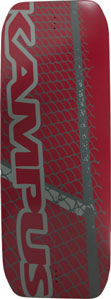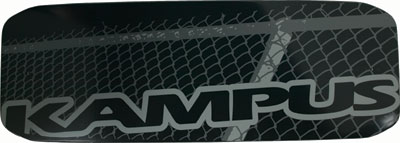
 Home Home
 All Articles All Articles
 Wakeskate Guide Wakeskate Guide
 Discussion Forums Discussion Forums
 Features Features
 Reviews Reviews
 Trick Tips Trick Tips
 Wakeskating History Wakeskating History
 Links Links
 Link To Us Link To Us
 Wakeboarding Wakeboarding
 Wakesurfing Wakesurfing
 Wakeboards Wakeboards
 Wakeboard Towers Wakeboard Towers
 Hyperlite Wakeskates Hyperlite Wakeskates
 Liquid Force Wakeskates Liquid Force Wakeskates
 Byerly Wakeskates Byerly Wakeskates
 Buy Wakeboards Buy Wakeboards
 Ronix Wakeboards Ronix Wakeboards
 Liquid Force Wakeboards Liquid Force Wakeboards
 Buy Wakeskates Buy Wakeskates
 Wakeboard Towers Wakeboard Towers
 Wakepics Wakepics
 Wake Videos Wake Videos
 Complete Longboards Complete Longboards
 Article Alert Article Alert

 Media Center Media Center
 Pictures Pictures
 Videos Videos
 Buy Wakeskate Videos Buy Wakeskate Videos

 Grip Deck Grip Deck
 Getting Up Getting Up
 Dock Start Dock Start
 Ollie Ollie
 HS Wake Jump HS Wake Jump
 TS Wake Jump TS Wake Jump
 HS Backside 180 HS Backside 180
 BS Pop Shuvit BS Pop Shuvit
 FS Pop Shuvit FS Pop Shuvit
 Surface 180 Shuvit Surface 180 Shuvit
 FS Bigspin FS Bigspin
 TS Shuvit to Indy TS Shuvit to Indy
 Kickflip Kickflip

 Advertise Advertise
 Contribute Articles Contribute Articles
 Submit A Trick Submit A Trick
 Feedback Form Feedback Form
 Visitor Feedback Visitor Feedback
 About RSS About RSS
|
Kampus K Series Wakeskate Review By: Dave Barousse By: Dave Barousse
Kampus Wakeskates continue to think outside of the box when it comes to shaping wakeskates and has introduced another uniquely shaped line of boards, the K Series. The Kampus K Series seems to be the deck of choice for the young rippers on the Kampus team such as George Daniels, Phillip Basino and Clint Tompkins. All three of these riders have had success on the Pro Tour riding this deck, so there must be something special about it. This board is simple with no gimmicks, but is all about the ride.
Size
The K Series is available in a 39 inch and a 41 inch deck. The K39 is 39.5 inches long, has a 14.0 inch waist and an 11.0 inch tip and tail width. The board weighs in at 6.3 pounds, has the centered twin rocker and a marin grade dipped finish. We were given the K41 to try out which is 41.4 inches long and weighs 6.5 pounds. The rest of the specs for the K41 are the same as the K39.
Shape
The unique shape of the K Series decks sets them apart from other wakeskates on the market today. The corners are cut at 45 degrees and go right into straight sidewalls. This simple technology gives the K Series a look all of its own as traditional wakeskates taper off from the middle to the tips and generally have contoured rails. What is the benefit of this shape? Kampus says that the angled corners enable the board to rotate quicker on surface tricks.
Construction
Kampus built the K Series using the 9 ply construction cold press model. The boards are made out of maple and boss wood laminates and are finished off with a polyurethane marine grade sealer. As mentioned above, the board feels rock solid. I was impressed with how well the board seemed to be put together. The marine dipped finish looks like it ads that needed extra layer of protection. Because of the simple design of the K Series, the board gives the illusion that it would feel light. Once picked up, the 6.5 pounds are very noticeable. This is great for riders like me that prefer to have some weight to their skates.
The Ride
The K Series is not as high tech as some of the concave designed wakeskates, but once riders got wind of what George Daniels was doing on this flat deck, the Wakeskating.com message boards lit up with questions about the Kampus K Series. How could Daniels possibly be doing such advanced tricks on a flat deck? It is simple; the K Series is a good ride. If I had to sum up the ride of the K Series in one word, I would have to say…smooth.

The first thing I noticed about the deck while riding it was how much surface area I had to play with. As a rider with big feet, the straight sidewalls and 45 degree corners helped enable me to keep more of my feet on the surface of the deck which was very nice for wake to wake tricks and big ollies. Even when putting my feet all the way to the edges of the tip and tail, I was less concerned about my toes and/or heels dragging in the water. The wide surface area also gives the rider more room to land on when doing tricks such as bigspins. A landing that is slightly off would be easier to recover from.
I did find that the board does easily rotate on the surface of the water and I was more often than not over doing 270 and 360 shuv-it attempts at first. After some getting used to the quickness, rotational tricks were performed with less effort on my part. The board also seems to have a late rocker giving the tip and tail more of a kick tail feel to it. Sort of like a skateboard but not nearly as drastic. When doing ollies, shv-its in the flats and shuv-it’s on/off the wakes, I found that I was changing my technique to adapt to the board. This resulted in more of a straight pop off the water with better control as opposed to a “scoop” like motion. Shuv-it’s were noticeably smoother and had added height.
On the wakes, the K Series performed as expected. I was less hesitant to take tricks bigger wake to wake because of the surface area I keep raving about. The board popped great off of the wake and landings were smooth. I cased the second wake a few times to see how the board would react. There wasn’t any noticeable flex in the board and no cracks afterwards.
Conclusion
Overall, the K Series from Kampus was a great surprise. With recent advancements in wakeskate designs, it was kind of ironic to get such great performance from such a simple design. With that in mind, the K Series may be even better with a concave top but that may take away some of the surface area that I liked so much. One other improvement that Kampus could possibly experiment with on the K Series would be adding rocker for an even more noticeable kicktail feel on the tip and tail. At $135.00, the K Series delivers a great ride for a great price. Riders with large feet will definitely appreciate the K Series as well as riders that like to perform rotational type tech tricks. I am looking forward to see what Kampus will come up with next.
To purchase a Kampu K Series or for additional information about the entire Kampus line, visit Kampus online at www.kampuswakesk8.com.
Shop For Wakeskating Gear 
|
|

 Wakeboards Wakeboards
 Ronix Wakeboards Ronix Wakeboards
 Hyperlite Wakeboards Hyperlite Wakeboards
 Liquid Force Wakeboards Liquid Force Wakeboards
 Slingshot Wakeboards Slingshot Wakeboards
 CWB Wakeboards CWB Wakeboards
 Wakeboard Bindings Wakeboard Bindings
 Ronix Bindings Ronix Bindings
 Hyperlite Bindings Hyperlite Bindings
 Liquid Force Bindings Liquid Force Bindings
 Slingshot Bindings Slingshot Bindings
 CWB Bindings CWB Bindings
 Wakeboard Packages Wakeboard Packages
 Wakeskates Wakeskates
 Wakesurf Boards Wakesurf Boards
|